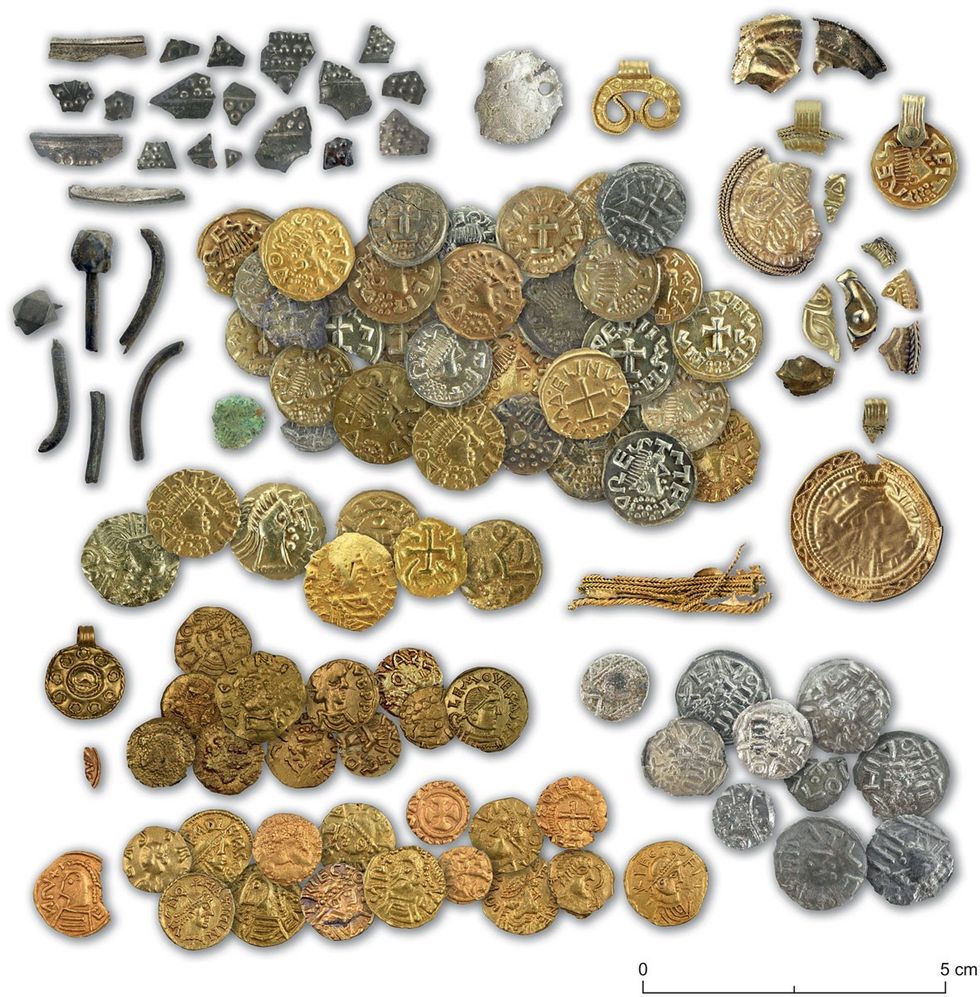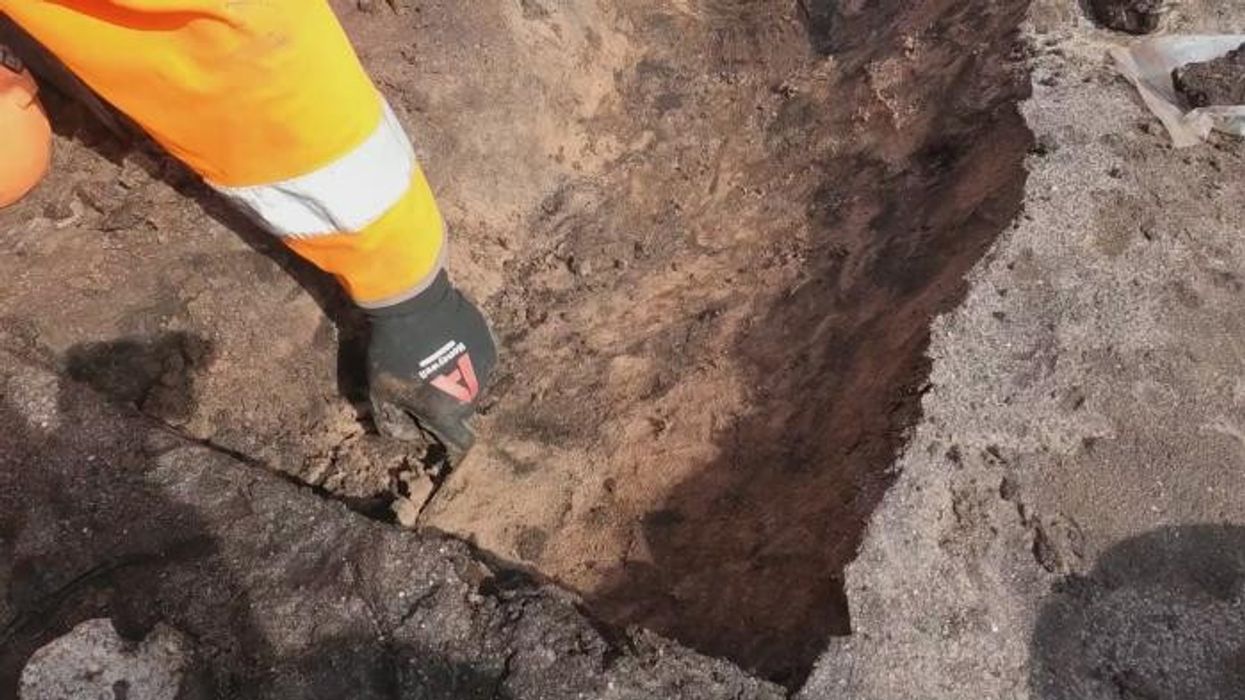The offerings included multiple hoards of gold and silver coins, along with jewellery items such as a pendant and an earring
Don't Miss
Most Read
Trending on GB News
Archaeologists have discovered a medieval cult site in the Netherlands where gold and silver coins were offered as "devil's money" in pre-Christian ritual deposits.
The site, located in Hezingen in the eastern Netherlands, was unearthed after metal detectorists found numerous gold and silver coins about five years ago.
The discovery provides rare insights into cult rituals in this region of Europe, as fewer pre-Christian sites have been found in the Netherlands, northern Germany and Britain compared to the Nordic world.
The offerings included multiple hoards of gold and silver coins, along with jewellery items such as a pendant and an earring.

The discovery provides rare insights into cult rituals in this region of Europe
Jan-Willem de Kort/Cultural Heritage Agency of the Netherlands
The archaeological site consists of three distinct areas, including a large circular feature made of wooden posts surrounding an unusually shaped building.
One area contained a single gold coin, whilst another yielded nearly two dozen fragmented and complete gold coins, along with a gold pendant and silver earring.
The third location revealed gold coin fragments and a small pendant.
Archaeologists discovered 17 postholes for wooden posts, which were aligned with spring and autumn equinoxes, suggesting the site's ritual significance.
Evidence of an old manor, likely built during the sixth century, was also found at one of the locations.

The discovery was made at the site of Hezingen in the Netherlands
According to the study, the site served as an important cult centre during a period of cultural transition in the region.
"The offerings may have been linked to fertility rites as the posts were aligned with the rising and setting of the sun during the spring and autumn equinoxes," researchers noted in the study.
Gold coins and jewellery were deposited at regular intervals over approximately 100 years.
Analysis suggests animals were also sacrificed at the site.
The exact deities worshipped at Hezingen remain unknown, though local people were later compelled to renounce their gods and stop offering "devil's money" at pagan cult sites.
The Hezingen site appears to have been abandoned around 700 AD, at least 50 years before the area's formal Christianisation.
Archaeologists believe the hamlet may have served as a 7th-century open-air cult site, possibly connected with immigrants.
The local elite associated with the site likely converted to Christianity earlier or moved away from paganism.
"Perhaps the place was abandoned or even desecrated by missionaries, with almost everything of value taken away," the study suggests.
However, researchers emphasise that alternative interpretations of the findings should also be considered.









